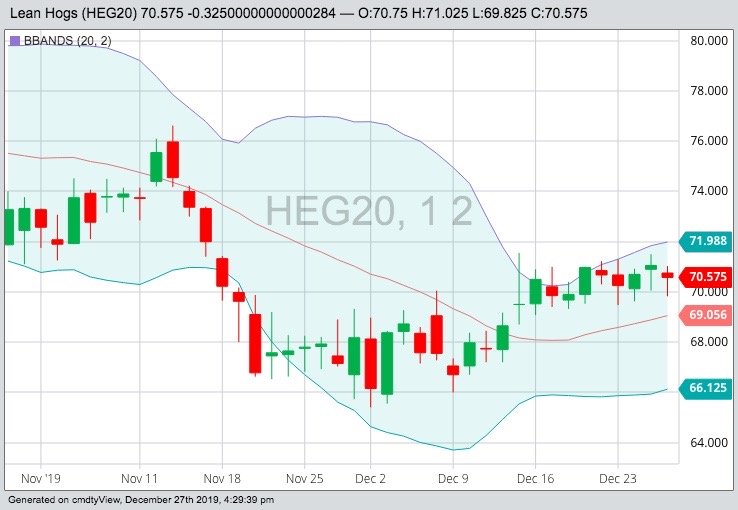Chicago | Reuters — U.S. hog futures dropped on Friday as pressure from large domestic supplies overshadowed an uptick in pork sales to China.
Traders are keeping an eye on Chinese demand because China, the world’s biggest pork consumer, is grappling with a fatal pig disease, African swine fever. Farmers are hoping China will further increase imports of U.S. pork to make up for the outbreak that has decimated its herd.
China was the biggest buyer of U.S. pork for delivery in 2020 last week, according to U.S. Department of Agriculture data. The agency reported net export sales of 5,690 tonnes to China from Dec. 13-19 for next year. The sales were the biggest for 2020 in about a month and came after three consecutive weeks of net cancellations by China.
Read Also

Alberta crop conditions improve: report
Varied precipitation and warm temperatures were generally beneficial for crop development across Alberta during the week ended July 8, according to the latest provincial crop report released July 11.
Weekly shipments of 16,115 tonnes of U.S. pork to China were the biggest since February, according to USDA data.
But U.S. supplies of hogs remain ample after producers expanded herds. The USDA said in a quarterly report on Monday that the inventory of all U.S. hogs and pigs on Dec. 1 was 77.3 million head, up three per cent from a year earlier.
“Monday’s hogs and pigs report confirmed we’ll have larger than needed supplies through February,” said Rich Nelson, chief strategist for commodities broker Allendale in Illinois.
Most actively traded February lean hog futures fell 0.325 cent, to 70.575 cents/lb., at the Chicago Mercantile Exchange. The contract pulled back after reaching its highest price since Dec. 13 on Thursday.
In the beef market, most actively traded February live cattle futures slipped 0.1 cent, to 126.700 cents/lb. Other contracts finished higher. January feeder cattle futures rose 0.1 cent, to 145.55 cents/lb.
Concerns about a winter storm disrupting U.S. cattle production underpinned cattle futures, traders said. A strong storm system is expected to bring snow across the north-central Plains and northern Midwest this weekend, according to weather forecaster Maxar.
Cold temperatures can slow weight gain in cattle, while snow threatens to hamper transportation of livestock to slaughterhouses.
Strong domestic and export demand for beef have also recently helped to support cattle futures.
China bought 219 tonnes of U.S. beef for 2020, a small amount, and Hong Kong bought about 3,369 tonnes. U.S. beef has previously entered China through Hong Kong in a process known as transshipment.
— Tom Polansek reports on agriculture and ag commodities for Reuters from Chicago.















